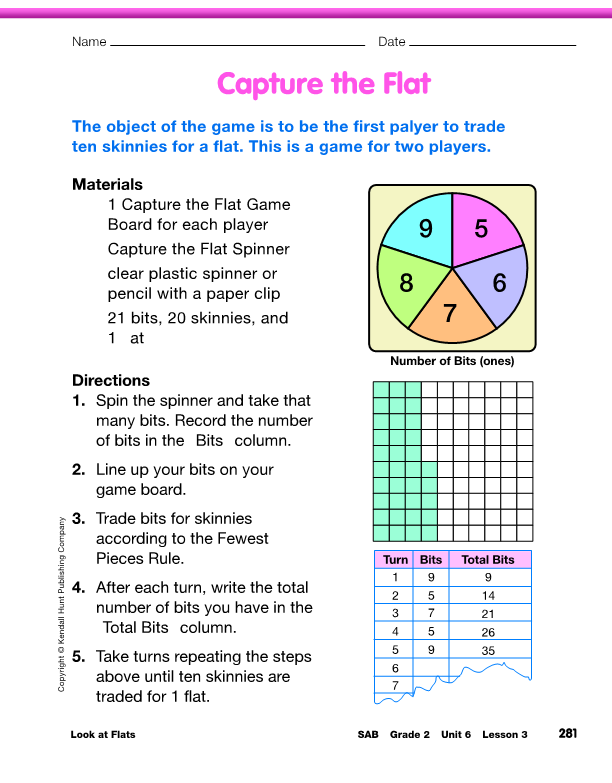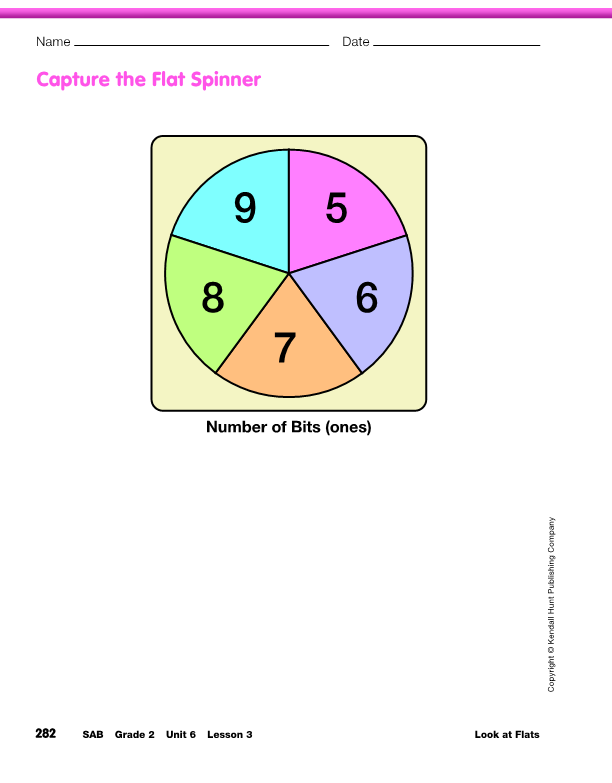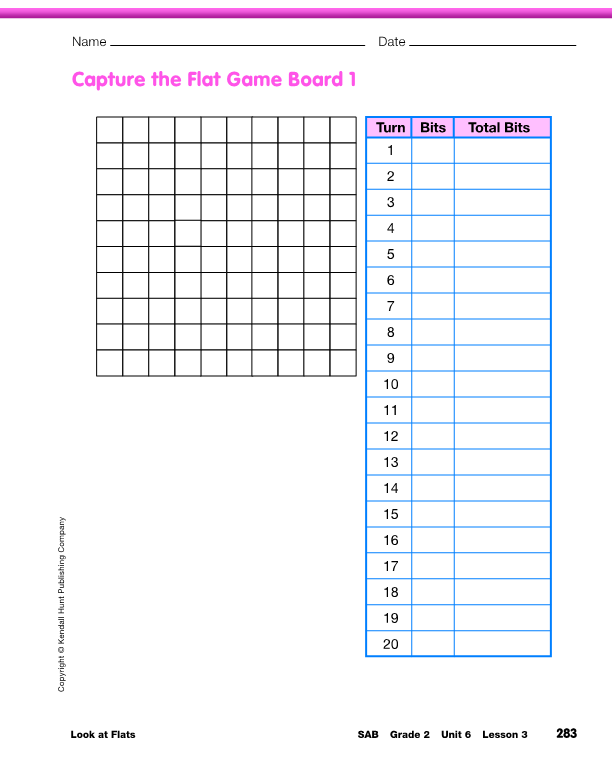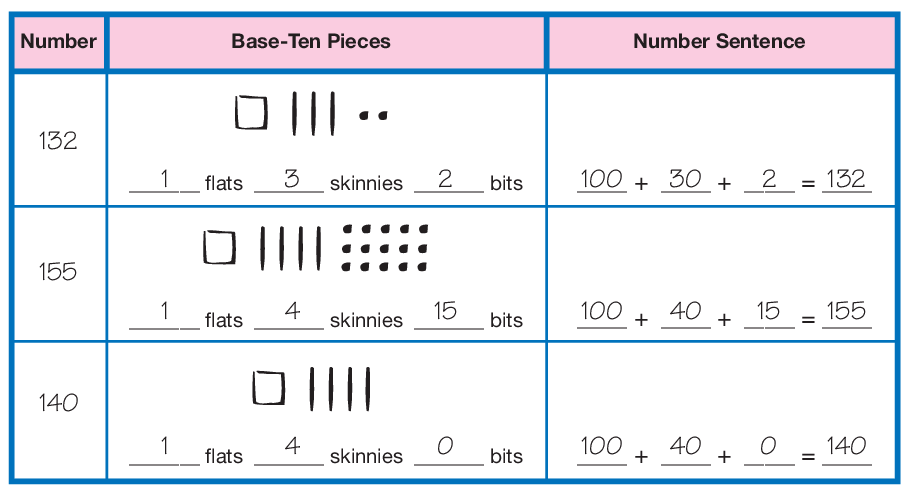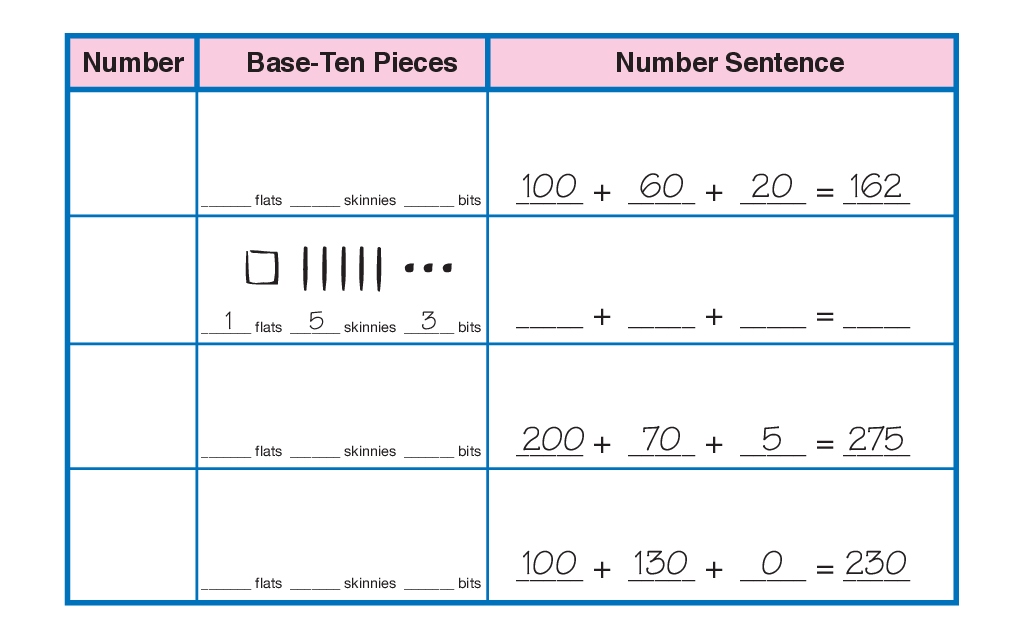Look at Flats
Estimated Class Sessions: 1–2Developing the Lesson
Introduce Flats. Distribute 3–5 flats, about 20 skinnies, and 21 bits to each student pair. Holding up a flat, tell students this is another base-ten piece to be used with skinnies and bits. It stands for 100.
Ask:
Ask student pairs to completely cover the flat with skinnies (one layer only) to confirm their conjectures.
Ask:
Play Capture the Flat. To explore how many bits in a flat, students play a game called Capture the Flat. Ask students to remove the Capture the Flat pages from their Student Activity Book. Students will take turns spinning, and after each spin, take the number of bits on the spinner and place them on the Capture a Flat Game Board. If a trade for a skinny is possible, students must trade in ten bits for a skinny. The student who is able to trade in ten skinnies for a flat first is the winner. Each student will record the number spun on their turn and their running total on the game board. Two game boards are included in each student's Student Activity Book.
When students have played the game at least once, have a discussion about what they have learned. Ask them what they think about trading the bits for skinnies and then trading the skinnies for a flat.
Ask:
Represent a Number with Base-Ten Pieces. Display one of each of the base-ten pieces. Tell students to display the same pieces at their desks.
Ask:
Write the number sentence on the board. Ask a student to point to each number and name the corresponding piece.
Write several numbers in the hundreds (for example, 132, 155, 140, etc.) on a display of the Show a Number with Base-Ten Pieces Master. Ask student pairs to model these numbers using their base-ten pieces. Accept models that do not use the fewest pieces and use them as a springboard for a discussion of trading and finding the representation that uses the Fewest Pieces Rule. See the chart in Figure 2.
Demonstrate how to fill in the chart for the first number. Student pairs then work to model the rest of the numbers. Ask volunteers to fill in the chart showing the representation they modeled. Have the other students tell whether the information entered accurately models the number given.
Ask questions similar to the following:
Reverse the activity by showing students a representation and asking them to identify the number. Use another display of the Show a Number with Base-Ten Pieces Master. Fill in either the number of flats, skinnies, and bits or the shorthand representation. See Figure 3.
Ask students to name the number and fill in the rest of the chart. Ask them to first model the number with base-ten pieces and then identify which representations are in the fewest pieces.



















